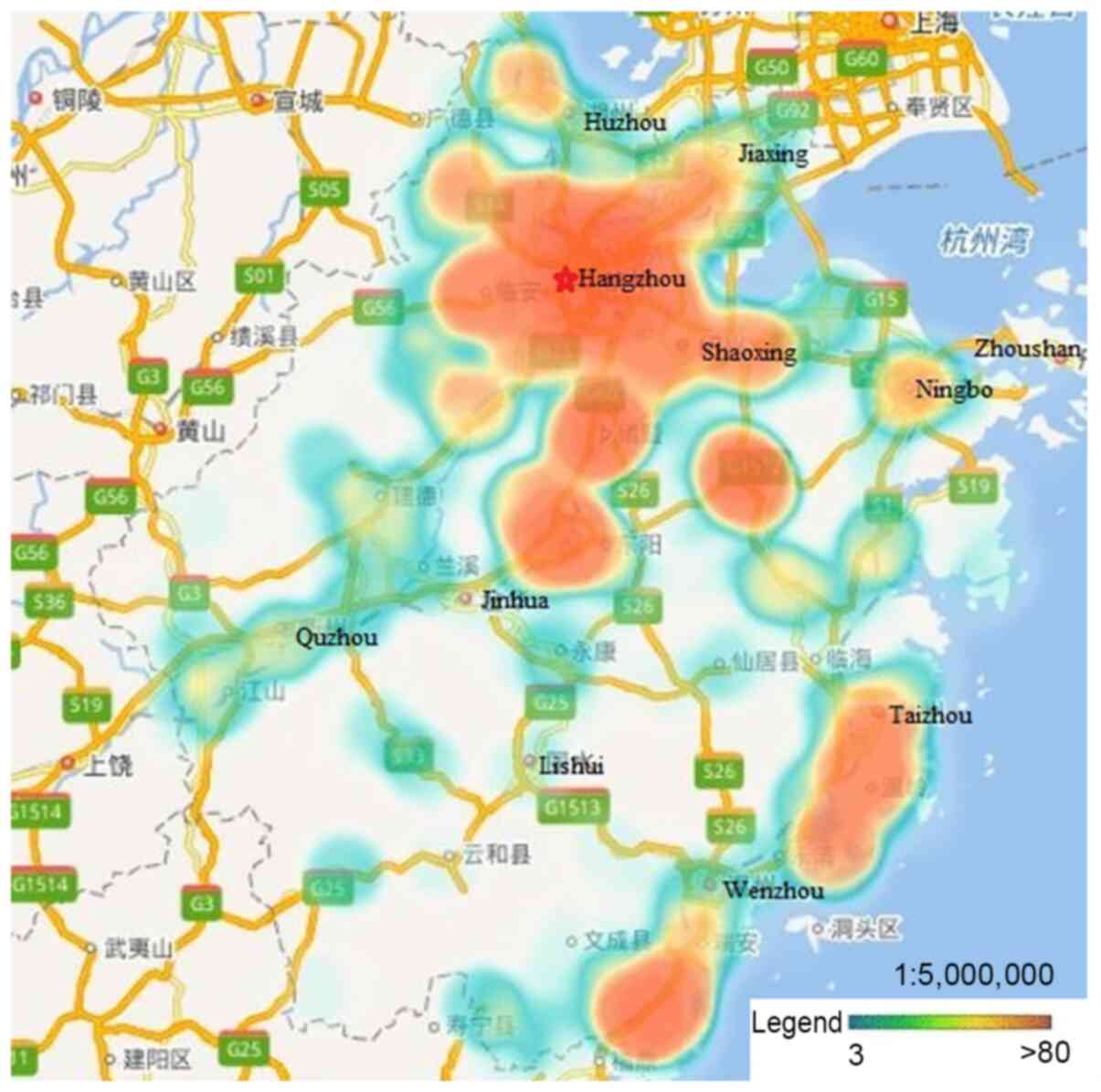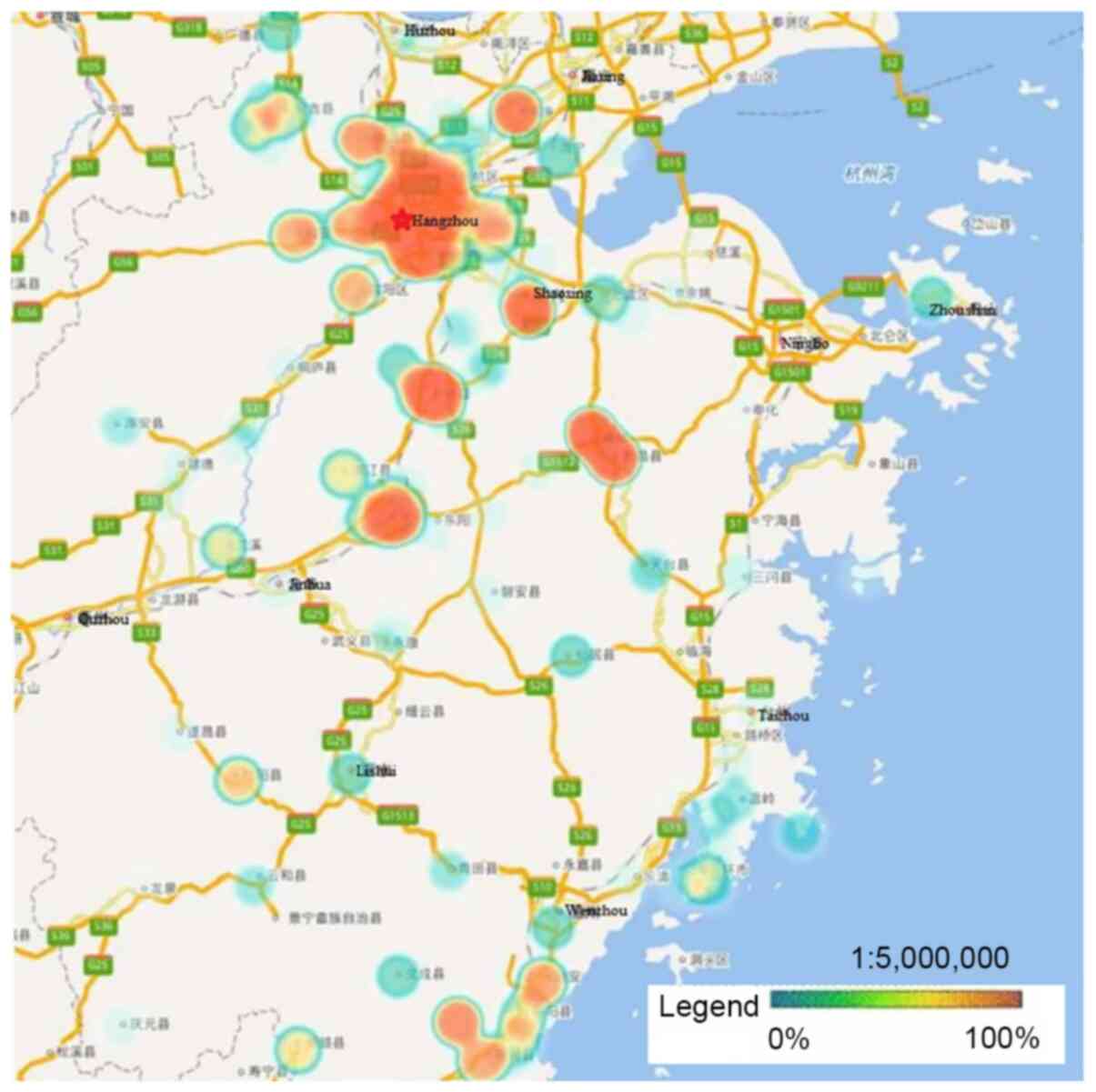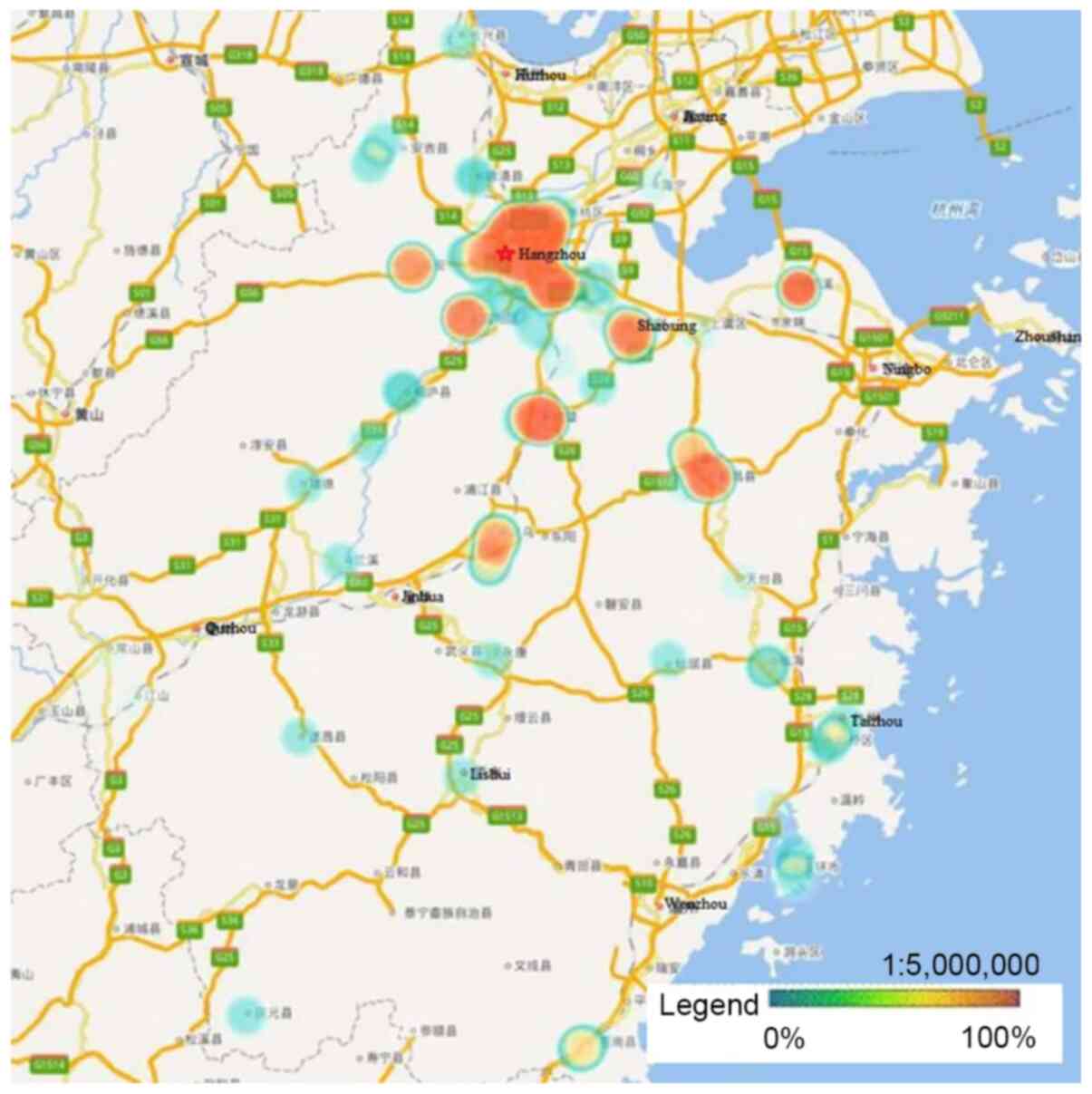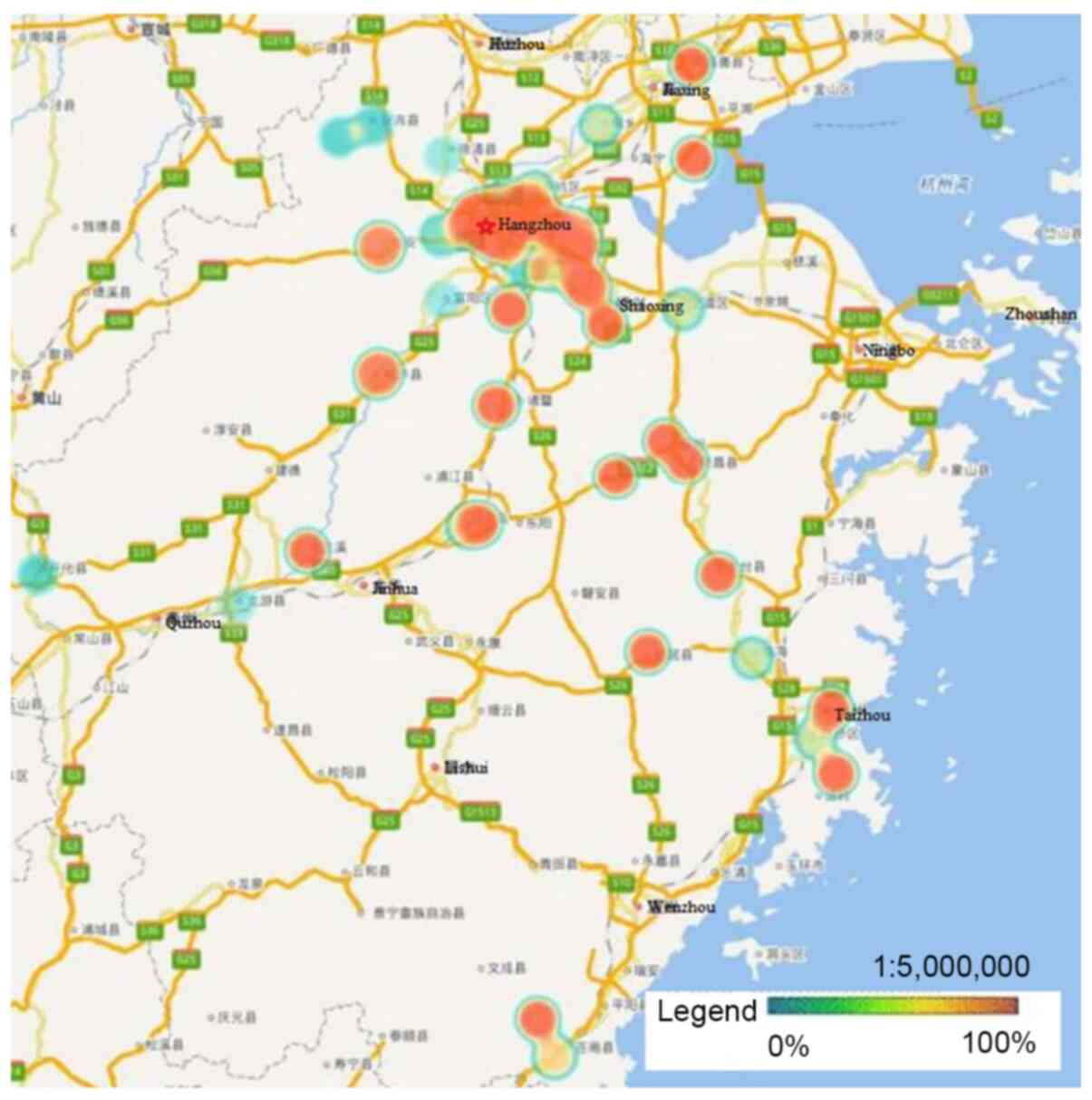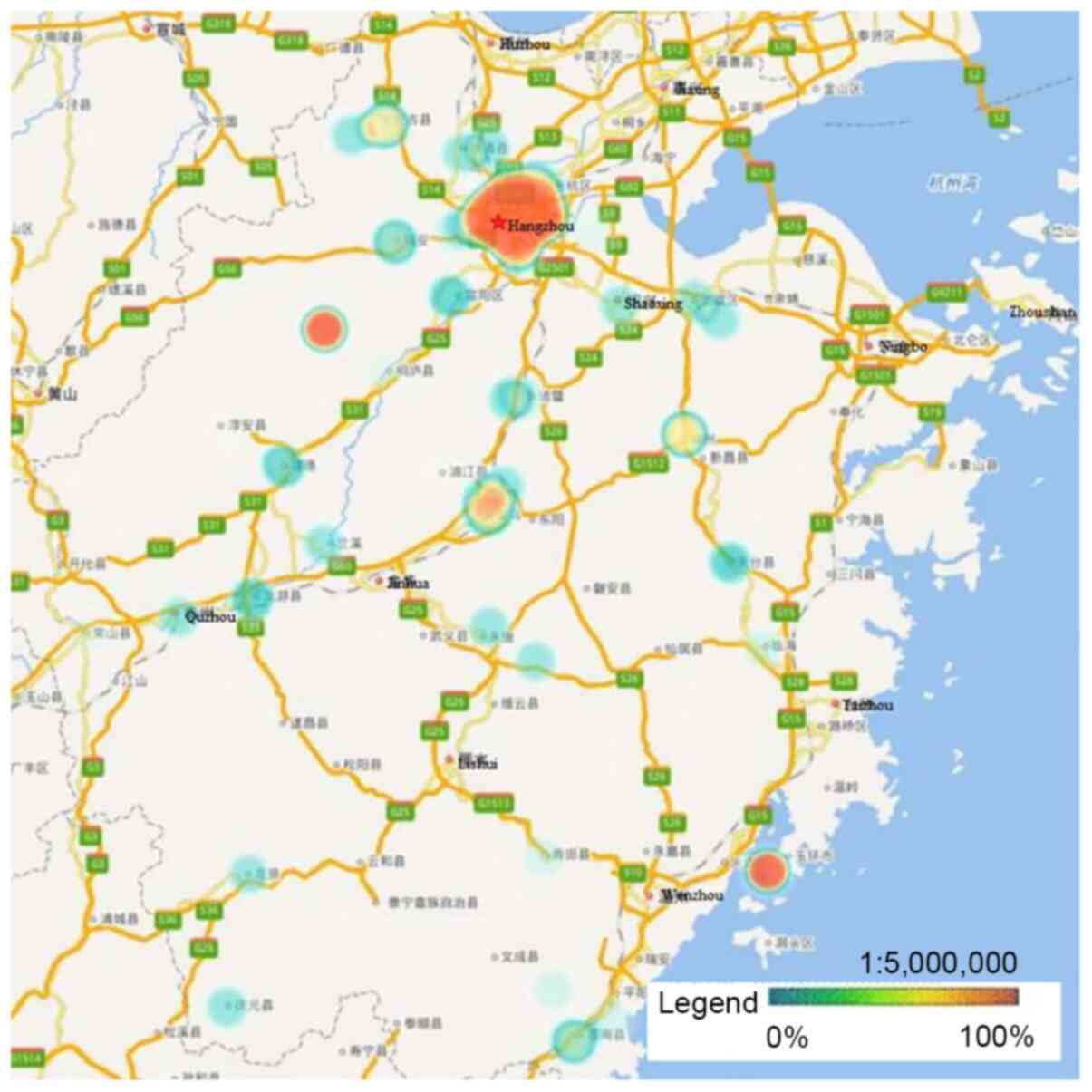|
1
|
Bray F, Ferlay J, Soerjomataram I, Siegel
RL, Torre LA and Jemal A: Global cancer statistics 2018: GLOBOCAN
estimates of incidence and mortality worldwide for 36 cancers in
185 countries. CA Cancer J Clin. 68:394–424. 2018. View Article : Google Scholar : PubMed/NCBI
|
|
2
|
Burchell AN, Winer RL, de Sanjosé S and
Franco EL: Chapter 6: Epidemiology and transmission dynamics of
genital HPV infection. Vaccine. 24 (Suppl 3):S3/52–61. 2006.
View Article : Google Scholar
|
|
3
|
Muñoz N, Bosch FX, de Sanjosé S, Herrero
R, Castellsagué X, Shah KV, Snijders PJ and Meijer CJ;
International Agency for Research on Cancer Multicenter Cervical
Cancer Study Group, : Epidemiologic classification of human
papillomavirus types associated with cervical cancer. N Engl J Med.
348:518–527. 2003. View Article : Google Scholar : PubMed/NCBI
|
|
4
|
De Sanjose S, Quint WG, Alemany L, Geraets
DT, Klaustermeier JE, Lloveras B, Tous S, Felix A, Bravo LE, Shin
HR, et al: Human papillomavirus genotype attribution in invasive
cervical cancer: A retrospective cross-sectional worldwide study.
Lancet Oncol. 11:1048–1056. 2010. View Article : Google Scholar : PubMed/NCBI
|
|
5
|
Clifford GM, Gallus S, Herrero R, Muñoz N,
Snijders PJ, Vaccarella S, Anh PT, Ferreccio C, Hieu NT, Matos E,
et al: Worldwide distribution of human papillomavirus types in
cytologically normal women in the International Agency for Research
on Cancer HPV prevalence surveys: A pooled analysis. Lancet.
366:991–998. 2005. View Article : Google Scholar : PubMed/NCBI
|
|
6
|
Walboomers JM, Jacobs MV, Manos MM, Bosch
FX, Kummer JA, Shah KV, Snijders PJ, Peto J, Meijer CJ and Muñoz N:
Human papillomavirus is a necessary cause of invasive cervical
cancer worldwide. J Pathol. 189:12–19. 1999. View Article : Google Scholar : PubMed/NCBI
|
|
7
|
Bruni L, Diaz M, Castellsagué X, Ferrer E,
Bosch FX and de Sanjosé S: Cervical human papillomavirus prevalence
in 5 continents: Meta-analysis of 1 million women with normal
cytological findings. J Infect Dis. 202:1789–1799. 2010. View Article : Google Scholar : PubMed/NCBI
|
|
8
|
Xu XX, Zhou JS, Yuan SH, Yu H and Lou HM:
Distribution of HPV genotype in invasive cervical carcinoma and
cervical intraepithelial neoplasiain zhejiang province, southeast
China: Establishing the baseline for surveillance. Int J Environ
Res Public Health. 12:10794–10805. 2015. View Article : Google Scholar : PubMed/NCBI
|
|
9
|
Huang S, Afonina I, Miller BA and Beckmann
AM: Human papillomavirus types 52 and 58 are prevalent in cervical
cancers from Chinese women. Int J Cancer. 70:408–411. 1997.
View Article : Google Scholar : PubMed/NCBI
|
|
10
|
Lo KW, Wong YF, Chan MK, Li JC, Poon JS,
Wang VW, Zhu SN, Zhang TM, He ZG, Wu QL, et al: Prevalence of human
papillomavirus in cervical cancer: A multicenter study in China.
Int J Cancer. 100:327–331. 2002. View Article : Google Scholar : PubMed/NCBI
|
|
11
|
Liu J, Rose B, Huang X, Liao G, Carter J,
Wu X and Thompson C: Comparative analysis of characteristics of
women with cervical cancer in high-versus low-incidence regions.
Gynecol Oncol. 94:803–810. 2004. View Article : Google Scholar : PubMed/NCBI
|
|
12
|
Requia WJ, Roig HL, Adams MD, Zanobetti A
and Koutrakis P: Mapping distance-decay of cardiorespiratory
disease risk related to neighborhood environments. Environ Res.
151:203–215. 2016. View Article : Google Scholar : PubMed/NCBI
|
|
13
|
Svendsen ER, Gonzales M, Mukerjee S, Smith
L, Ross M, Walsh D, Rhoney S, Andrews G, Ozkaynak H and Neas LM:
GIS-modeled indicators of traffic-related air pollutants and
adverse pulmonary health among children in El Paso, Texas. Am J
Epidemiol. 176 (Suppl 7):S131–S141. 2012. View Article : Google Scholar : PubMed/NCBI
|
|
14
|
Khoury MJ, Iademarco MF and Riley WT:
Precision Public Health for the Era of Precision Medicine. Am J
Prev Med. 50:398–401. 2016. View Article : Google Scholar : PubMed/NCBI
|
|
15
|
Tao P, Zheng W, Wang Y and Bian ML:
Sensitive HPV genotyping based on the flow-through hybridization
and gene chip. J Biomed Biotechnol. 2012:9387802012. View Article : Google Scholar : PubMed/NCBI
|
|
16
|
Zou H, Meng X, Jia T, Zhu C, Chen X, Li X,
Xu J, Ma W and Zhang X: Awareness and acceptance of human
papillomavirus (HPV) vaccination among males attending a major
sexual health clinic in Wuxi, China: A cross-sectional study. Hum
Vaccin Immunother. 12:1551–1559. 2016. View Article : Google Scholar : PubMed/NCBI
|
|
17
|
Adenis A, Dufit V, Douine M, Corlin F,
Ayhan G, Najioullah F, Molinie V, Brousse P, Carles G, Lacoste V,
et al: High prevalence of HPV infection in the remote villages of
French Guiana: An epidemiological study. Epidemiol Infect.
145:1276–1284. 2017. View Article : Google Scholar : PubMed/NCBI
|
|
18
|
Lynge E, Clausen LB, Guignard R and Poll
P: What happens when organization of cervical cancer screening is
delayed or stopped. J Med Screen. 13:41–46. 2006. View Article : Google Scholar : PubMed/NCBI
|
|
19
|
Sankaranarayanan R, Nene BM, Shastri SS,
Jayant K, Muwonge R, Budukh AM, Hingmire S, Malvi SG, Thorat R,
Kothari A, et al: HPV screening for cervical cancer in rural India.
N Engl J Med. 360:1385–1394. 2009. View Article : Google Scholar : PubMed/NCBI
|
|
20
|
Sukvirach S, Smith JS, Tunsakul S, Muñoz
N, Kesararat V, Opasatian O, Chichareon S, Kaenploy V, Ashley R,
Meijer CJ, et al: Population-based human papillomavirus prevalence
in Lampang and Songkla, Thailand. J Infect Dis. 187:1246–1256.
2003. View
Article : Google Scholar : PubMed/NCBI
|
|
21
|
Li N, Hang D, Yang L, Feng X, Lyu Z, Xie
S, Zhou J, Wu L, Li X, Li N, et al: Persistence of type-specific
human papillomavirus infection among Daqing City women in China
with normal cytology: A pilot prospective study. Oncotarget.
8:81455–81461. 2017. View Article : Google Scholar : PubMed/NCBI
|
|
22
|
Mammas IN, Spandidos DA and Sourvinos G:
Genomic diversity of human papillomaviruses (HPV) and clinical
implications: An overview in adulthood and childhood. Infect. Genet
Evol. 21:220–226. 2014. View Article : Google Scholar
|
|
23
|
Nygård M, Hansen BT, Dillner J, Munk C,
Oddsson K, Tryggvadottir L, Hortlund M, Liaw KL, Dasbach EJ and
Kjær SK: Targeting human papillomavirus to reduce the burden of
cervical, vulvar and vaginal cancer and pre-invasive neoplasia:
Establishing the baseline for surveillance. PLoS One. 9:e883232014.
View Article : Google Scholar : PubMed/NCBI
|















